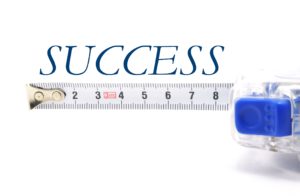 About eight years ago I road in the Wildflower 50 bicycle rally outside Atascadero, California. Now, at the time my wife entered us in the “race” of 50 miles, I had not ridden on a bicycle for years. In fact, I didn’t own a working model. So the day before we drove up north to meet our inlaws to ride in the rally, we purchased two road bikes that had ten gears. They were not racing bikes, or even mountain bikes, but they looked alright and were on sale! I assembled the two bikes (which came in boxes) the day before we left and road around the block to test my craftsmanship. Since I made it around the block without losing a wheel, I figured I was “ready to roll.”
About eight years ago I road in the Wildflower 50 bicycle rally outside Atascadero, California. Now, at the time my wife entered us in the “race” of 50 miles, I had not ridden on a bicycle for years. In fact, I didn’t own a working model. So the day before we drove up north to meet our inlaws to ride in the rally, we purchased two road bikes that had ten gears. They were not racing bikes, or even mountain bikes, but they looked alright and were on sale! I assembled the two bikes (which came in boxes) the day before we left and road around the block to test my craftsmanship. Since I made it around the block without losing a wheel, I figured I was “ready to roll.”
The next day, after we received our identification numbers, we set off on the ralley. The terraine was beautiful and I was enjoying the ride…until about mile 5 of the 50 mile course. My butt hurt. That was just the start of the long arguous ride that I was ill prepared to compete. The low point at about mile 40 was when I was going up hill. I heard a bicycle bell ring behind me with the feeble voice of ,” On your left!” I moved over just in time to see two old ladies on a tandem bicylce pass me saying, “Thank you, honey.” I thought my critical success factor in the race was to finish the race. After being passed by two 70 year old women, I realized that I had used the wrong measure for “success.”
Most small business leaders that I encounter do not use adequate measures of their strategies. Usually their measures are: Do I have enough money for payroll? And, what were my monthly sales?
Years ago, I was involved in reviewing a book, Driving Your Company’s Value: Strategic Benchmarking for Value by Maud, Dunne, Osborne, and Rigby. My late friend, Jim Rigby introduced to the measures that the book and philosophy proposed. The book identified and measured gaps in hard performance through the Mobley Matrix cash flow analysis and the DuPont formula’s Return on Equity shortfalls, as well as soft performance (groups of people marching to a different drummer). The book professed that by identifying, measuring, and managing these hard and soft gaps, the company will be able to bring strategy, systems, and people into alignment, thus maximizing value.
The Mobley Matrix using the the following financial statements: Beginning Balance Sheet, Income Statement, Cash Flow Statement, and Ending Balance Sheet is the first component for your data. Add to that, the Dupont Fomula and other metrics and you arrive at their Return on Strategic Effectiveness Scorecard (ROSE). This scorecard consists of many metrics including: sales related, turnover, and changes in cash flows. Business owners and strategists can benefit by establising critical success factors to see if they are in alignment with their strategy.
Strategy is important, but without measuring its implementation, it is almost sure to fail.
